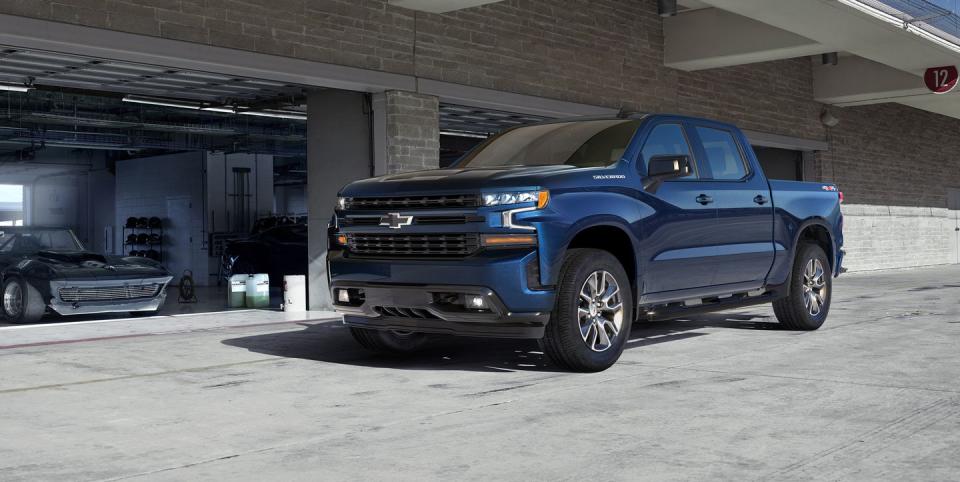2019 Chevrolet Silverado’s Turbo Four Gets Disappointing MPG Ratings

UPDATE 10/10/18: Chevrolet says that the new turbocharged 2.7-liter four-cylinder engine in the Silverado achieves EPA fuel-economy numbers of 20 mpg city and 23 mpg highway. These numbers apply to rear-wheel-drive four-cylinder models; four-wheel-drive figures aren't yet available. We have updated our story below with a closer look at how the four-cylinder Silverado's efficiency stacks up within Chevy's truck lineup and among other pickup competitors.
Chevrolet will add a turbocharged four-cylinder engine to the 2019 Silverado pickup truck. The engine, built in Spring Hill, Tennessee, will be available in midline LT and RST trims and serves as the entry-level powertrain in those models. Today’s 4.3-liter V-6 will live on in lower-level Work Truck, Custom, and Custom Trail Boss trims.
Displacing 2.7 liters, the long-stroke forced-induction inline-four is an all-new unit that General Motors said was designed specifically for truck applications. It packs a solid punch with 310 horsepower and 348 lb-ft of torque-just 35 lb-ft shy of the optional 5.3-liter V-8-that is available from as low as 1500 rpm and continues to 4000 revs. The engine is paired exclusively with an eight-speed automatic transmission.
Dual-vane turbocharging and an electronic wastegate help keep lag at bay, and during a brief drive around General Motors’ proving ground in Milford, Michigan, the turbo four took off with the gusto of a naturally aspirated engine. The automatic transmission does the four-cylinder no favors, however, as it’s eager to reach its tallest ratio and apathetic to downshift when the accelerator pedal is floored.
Still, the little engine moved the big Silverado with plenty of pep off the line while emitting no noticeable vibration while on the go, at idle, or on restarting from a stop by way of its automatic stop/start system. Additional efficiency measures include variable valve timing, an electric water pump, and a cylinder-deactivation system that seamlessly cuts fuel to cylinders two and three if conditions permit. The use of an aluminum block helps make for an engine that weighs approximately 80 pounds less than the 4.3-liter V-6.
Chevrolet isn’t yet releasing trailer-tow ratings for the four-cylinder, but fuel economy information is now available for the 2.7-liter turbo. Rear-wheel-drive Silverado models with the four-cylinder achieve EPA ratings of 20 mpg city and 23 mpg highway according to Chevrolet, an improvement of 2 mpg city but a drop of 1 mpg highway compared to the old Silverado's 4.3-liter V-6. The new 2019 Silverado's optional 5.3-liter V-8 also matches the four-cylinder's highway fuel economy, although its city fuel economy sits 4 mpg lower, at 16 mpg.
Crosstown rival Ford achieves better numbers with its own boosted 2.7-liter engine, the twin-turbo V-6 that's optional in the F-150. Rear-wheel-drive F-150 models with that engine hit up to 20 mpg city and 26 mpg highway. Ram's new 1500 pickup, too, beats the Silverado four-cylinder with its standard 3.6-liter V-6 that achieves up to 20 mpg city and 25 mpg highway. We'll have to see how the Silverado's four-cylinder performs in the real world to truly evaluate its merits, but on paper, this new engine's efficiency story is not looking so great.
('You Might Also Like',)

 Yahoo Autos
Yahoo Autos 

